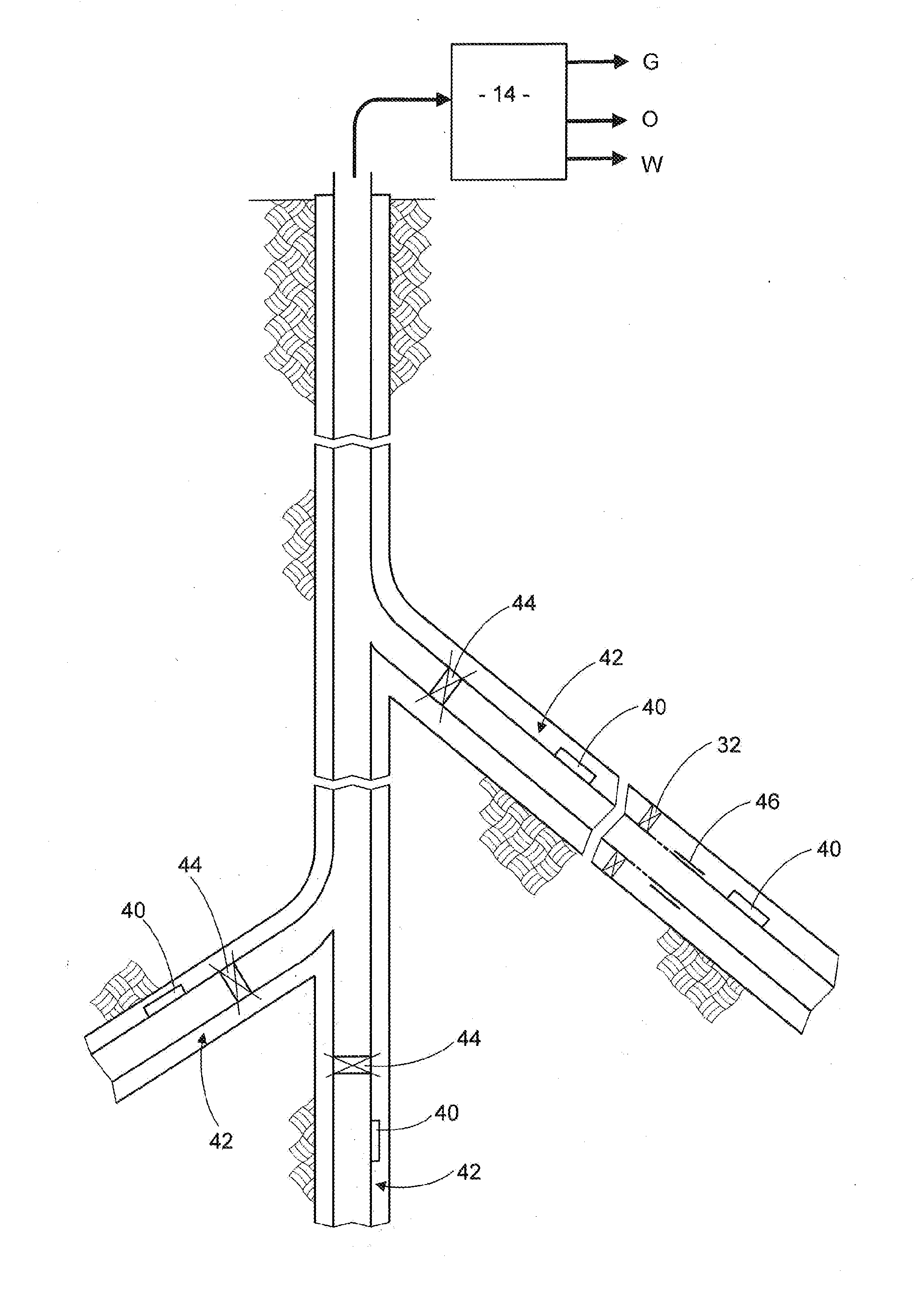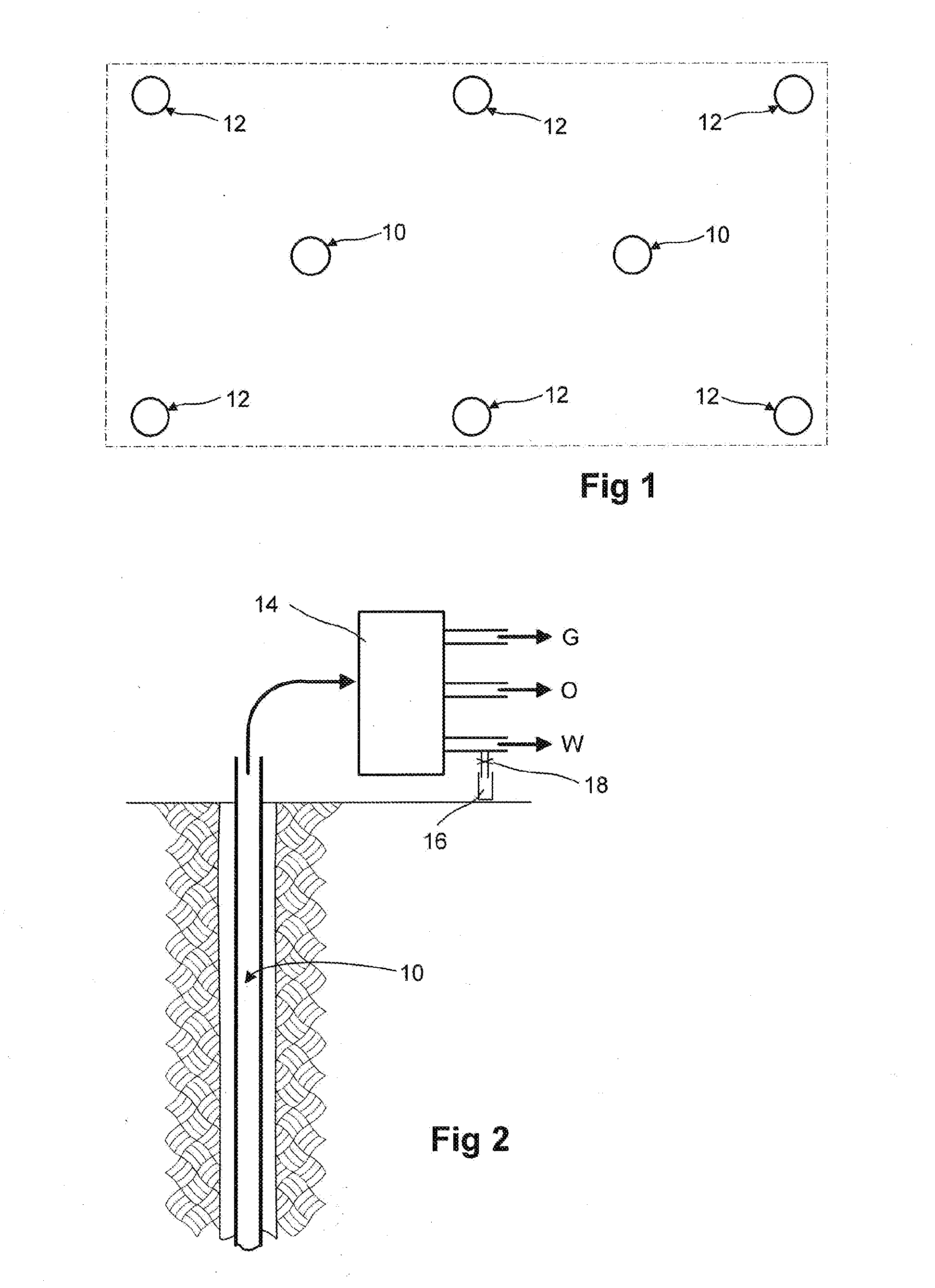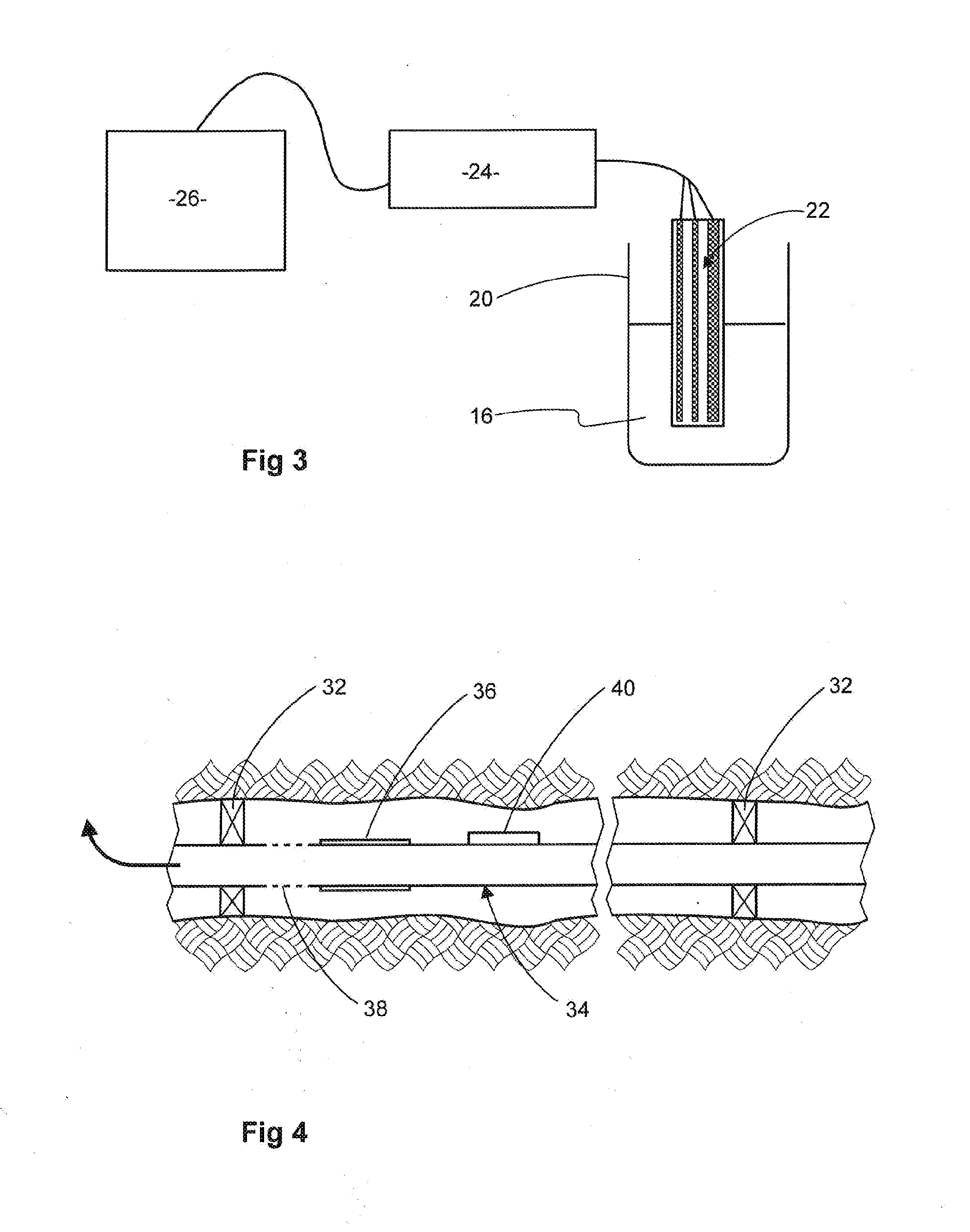Detection of tracers used in hydrocarbon wells
a technology of hydrocarbon wells and tracers, which is applied in the field of tracers, can solve the problems of a significant time delay between taking samples, and achieve the effect of enhancing the sensitivity of voltammetry and enhancing the mass transport to the electrod
- Summary
- Abstract
- Description
- Claims
- Application Information
AI Technical Summary
Benefits of technology
Problems solved by technology
Method used
Image
Examples
example 1
[0070]One possible tracer which may be used in procedures as above is copper ions, conveniently provided as copper (II) sulfate. In order to demonstrate that this is detectable, a solution of 7 ppm copper (II) sulphate pentahydrate in a solution of 150 mM KCl in deionised water was subjected to cyclic voltammetry. A standard experimental setup was used, with a glassy carbon working electrode, a standard calomel electrode (SCE) as reference electrode and a platinum wire as counter electrode.
[0071]FIG. 7 shows the voltammogram obtained. It is a plot of current (in microamps) against applied potential (in volts) relative to the reference electrode. A sharp oxidative wave observed at approximately 0 volt (relative to SCE) is consistent with the oxidation of deposited Cu to Cu(I) whilst the oxidative wave at +0.15 volt is oxidation of Cu(I) to Cu(II). The scan was continued to +0.60 volt and then reversed. Two reductive waves were observed at +0.03 volt and −0.31 volt. These voltammetric...
example 2
[0073]Another possible tracer is barbituric acid. A series of aliquots of this acid were added to a quantity of a formation brine (a saline solution reproducing the analysis of a North Sea formation brine). A square wave anodic voltammogram was taken after each addition had been mixed in. Voltammetry was carried out using a boron doped diamond working electrode, a standard calomel electrode (SCE) as reference and a platinum wire as counter electrode. The composition of the formation brine was: NaCl (27910 ppm), KCl (125 ppm), MgCl2 (650 ppm), CaCl2 (1700 ppm), SrCl2 (250 ppm), BaCl2 (20 ppm), and KHCO3 (145 ppm) prepared in deionised water. The measured pH value of the formation brine was pH 7.6 (at ambient temperature). The square wave used in voltammetry had a frequency of 50 Hz; a step amplitude of 0.02 volt; and increased in potential by 0.002 volt at each step giving an overall scan rate of 0.1 volt / sec.
[0074]FIG. 8 shows the voltammograms obtained. In each of the voltammograms...
example 3
Synthesis of Nanoparticles
[0075]Synthesis of CdS nanoparticles was performed using Schlenk techniques under nitrogen.
[0076]The preparation method was based on arrested precipitation of cadmium sulfide from cadmium chloride solution as disclosed by Barglik-Chory, et al Synthesis, structure and spectroscopic characterization of water-soluble CdS nanoparticles (2003) Chemical Physics Letters, 379 (5-6), pp. 443-451 and is schematically illustrated by FIG. 4. The starting materials were cadmium chloride CdCl2 and hexamethyldisilathiane (HMSDT) which has the formula (CH3)3Si—S—Si(CH3)3. These were used together with glutathione which served as a water-soluble capping agent so as to produce nanoparticles of cadmium sulfide with glutathione residues bound to the nanoparticles' surface. Glutathione has the structure:
[0077]To prepare the nanoparticles, 3.228 g glutathione and 0.799 g CdCl2 were first dissolved in 176 mL deionised water and stirred for 5 mins. Subsequently, 8.5 mL tetramethyl...
PUM
 Login to View More
Login to View More Abstract
Description
Claims
Application Information
 Login to View More
Login to View More - R&D
- Intellectual Property
- Life Sciences
- Materials
- Tech Scout
- Unparalleled Data Quality
- Higher Quality Content
- 60% Fewer Hallucinations
Browse by: Latest US Patents, China's latest patents, Technical Efficacy Thesaurus, Application Domain, Technology Topic, Popular Technical Reports.
© 2025 PatSnap. All rights reserved.Legal|Privacy policy|Modern Slavery Act Transparency Statement|Sitemap|About US| Contact US: help@patsnap.com



